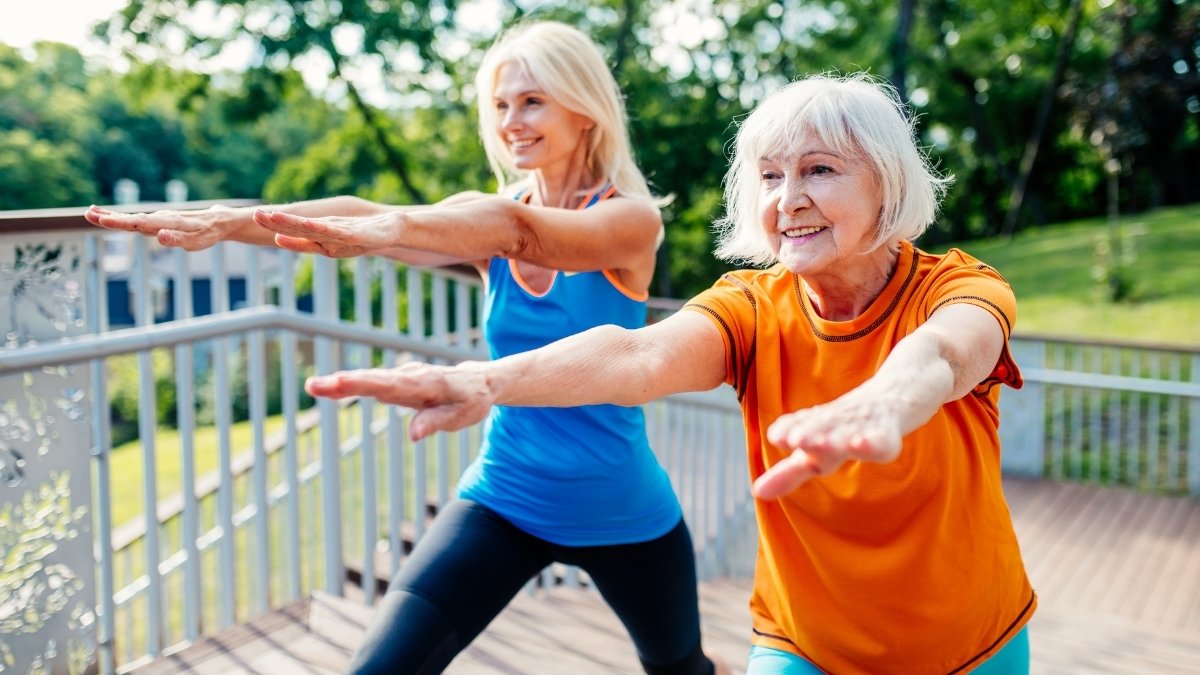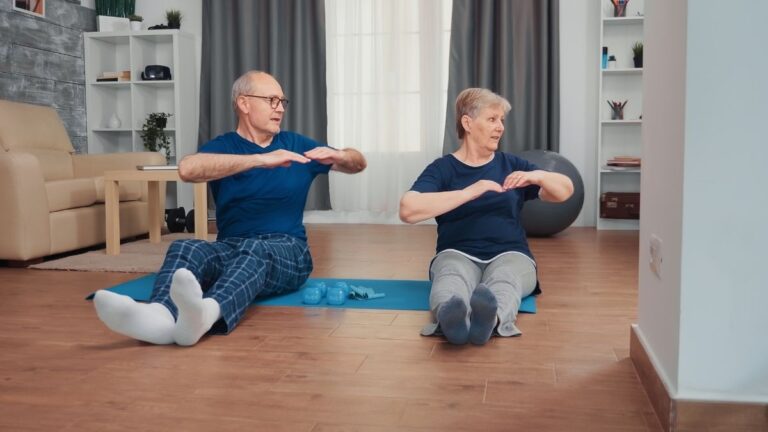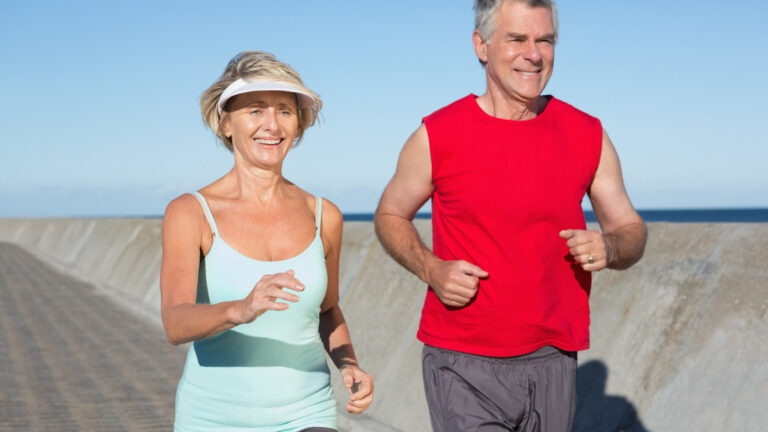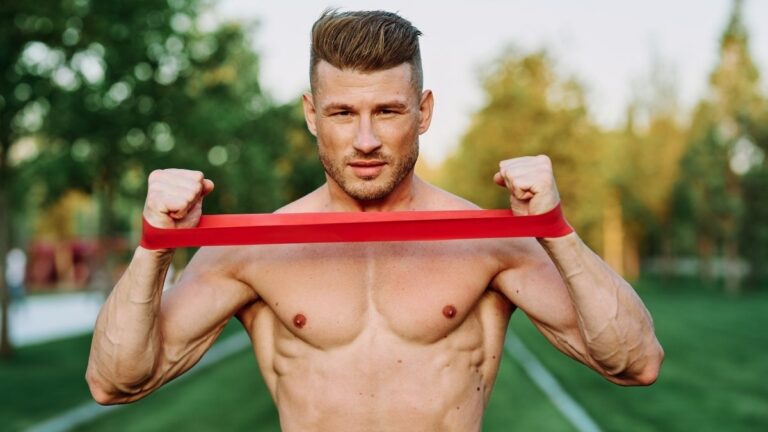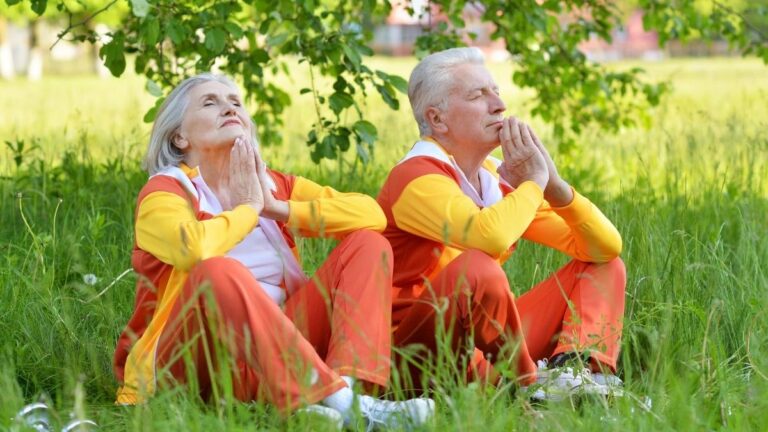You Won’t Believe this 20-Minute Standing Exercise Routine for Seniors: Stay Strong, Prevent Falls, and Feel 50 Again
Meet Joseph Caminiti: at 100, he drives himself to the gym five days weekly for cardio and strength training. Consider Edna Giordano, who started at 65 and trains four days weekly at 92, doing squats and climbing stairs easily.
Each year, over 25 percent of adults 65 or older fall, with 3 million treated in emergency departments. Fear of falling creates a dangerous cycle of declining strength and balance.
This article breaks down a proven 20-minute routine for seniors over 60. You’ll discover 15 exercises that build leg strength, improve circulation, and significantly reduce fall risk—no equipment needed.
Why Exercise Matters More After 60
Your body changes after 60. That’s just reality. But here’s what most people don’t know: those changes aren’t set in stone.
The Complete 15-Exercise Senior Strength Circuit
Your 20-Minute Path to Strength, Balance & Independence
Why Seniors Need This Routine
Complete Exercise Flow
→ Rest 60 seconds → Repeat entire circuit once more
Your Weekly Schedule at a Glance
In 2025, Canada became what experts call a “super-aged” country. That means one in five Canadians is now 65 or older. This isn’t just happening in Canada. It’s everywhere.
Your muscles start shrinking about 1% each year after you hit middle age. Do the math. By 80, you could lose half your muscle mass. Half. That’s why your legs feel weaker. That’s why stairs get harder.
Quick Tip: Break those 150 minutes into small chunks. Three 20-minute sessions spread across your week counts. You don’t need to do it all at once.
But here’s the problem. Only 40% of older adults meet the aerobic guidelines. And just 15% do both cardio and strength work. Most people aren’t moving enough.
Real Talk: If you’ve fallen once, you’re scared it’ll happen again. That fear makes you move less. Moving less makes you weaker. Being weaker makes falls more likely. Exercise breaks that cycle.
Take Richard Morgan. At 93, he’s a four-time world champion in indoor rowing. His aerobic capacity? Better than most 30-year-olds. His secret? He kept moving.
The Complete 20-Minute Standing Exercise Routine
This routine is simple. No gym membership. No fancy equipment. Just you and maybe a chair.
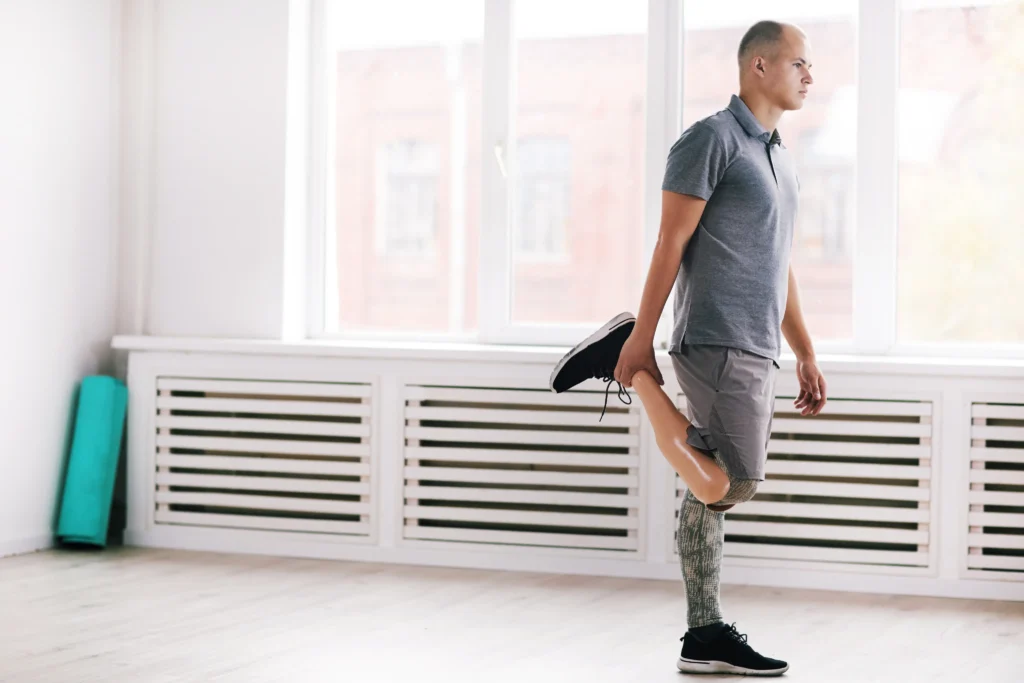
You’ll do a 5-minute warm-up first. Then 10 exercises. Each one lasts 50 seconds. You get 10 seconds to rest between moves. Do the whole thing twice.
Smart Start: Set a timer on your phone. It keeps you honest about work and rest periods.
Everything happens standing up. That’s important. Standing exercises build the exact strength you use every day. Getting out of chairs. Walking to the mailbox. Reaching for dishes.
Do this routine 3 to 5 times per week. More isn’t always better. Your body needs rest days to get stronger.
The chair is there for support, not for sitting. Touch it when you need balance. Let go when you feel steady.
Equipment Checklist:
- A sturdy chair (not one with wheels)
- Comfortable clothes you can move in
- Athletic shoes with good grip
- Water bottle nearby
- Phone timer
Start where you are. If you can only do the warm-up today, that’s fine. Tomorrow you’ll do more.
Warm-Up Exercises (5 Minutes)
Cold muscles tear. Warm muscles work. That’s why you never skip the warm-up.
Exercise 1: Shoulder Rolls
Stand with your feet hip-width apart. Roll your shoulders up toward your ears. Then back. Then down. Keep going for 30 to 45 seconds.
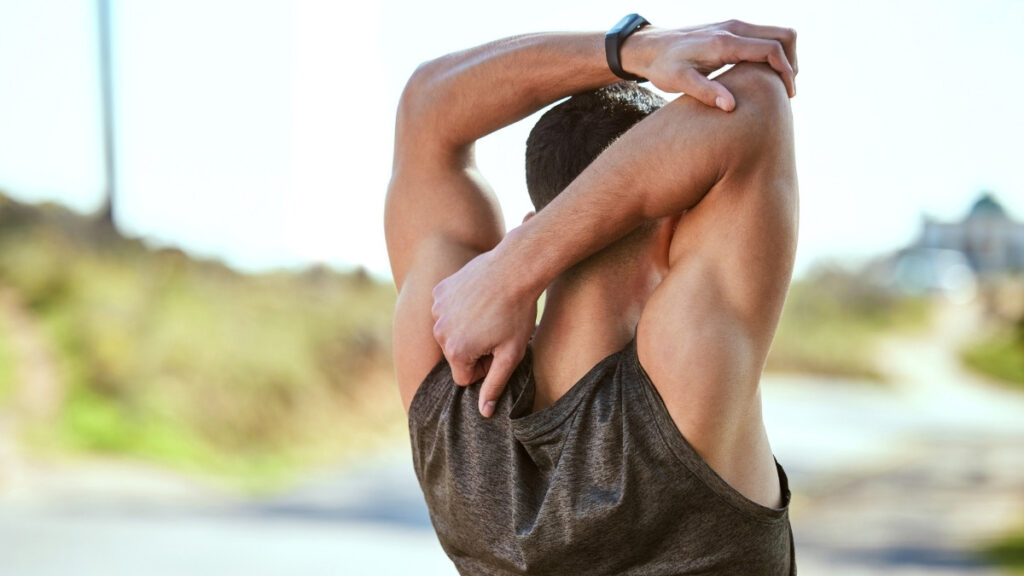
This releases tension in your upper back and neck. Most people carry stress there. You’ll feel better after just a few rolls.
Try This: Close your eyes while you do shoulder rolls. It helps you focus on the movement and spot where you’re holding tension.
Exercise 2: Controlled Side Bends
Keep your feet hip-width apart. Put your hands at your sides. Slide one hand down the outside of your leg. Don’t lean forward. Just bend to the side. Come back up. Switch sides.
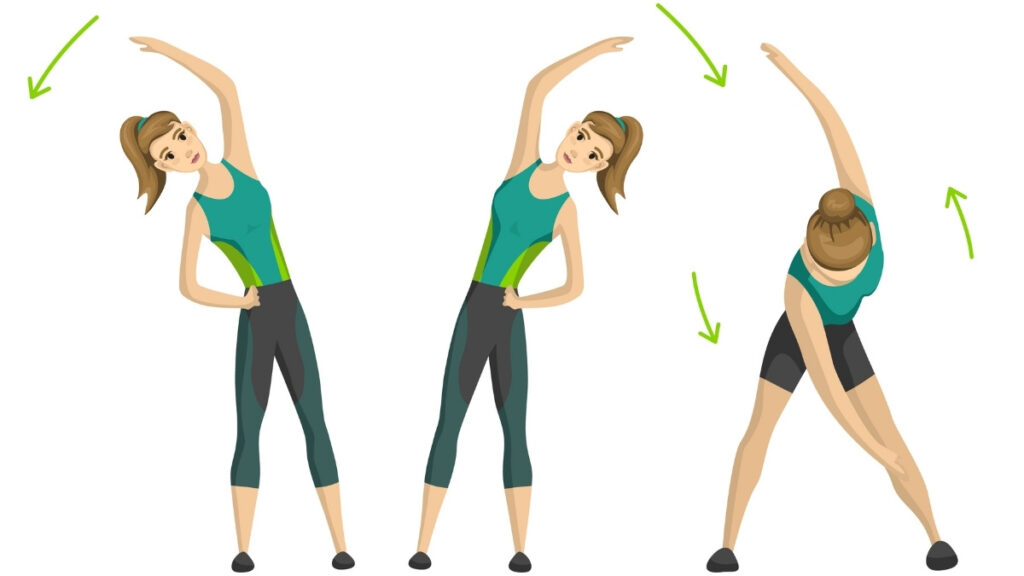
This wakes up the muscles along your sides. They help you balance. They also protect your spine when you twist or turn.
Common Mistake: People bend forward instead of to the side. Keep your chest facing forward the whole time. Imagine you’re between two walls.
Exercise 3: Upper Body Rotations
Hold your hands out in front of you. Keep your hips facing forward. Rotate your upper body to the left. Come back to center. Rotate right.
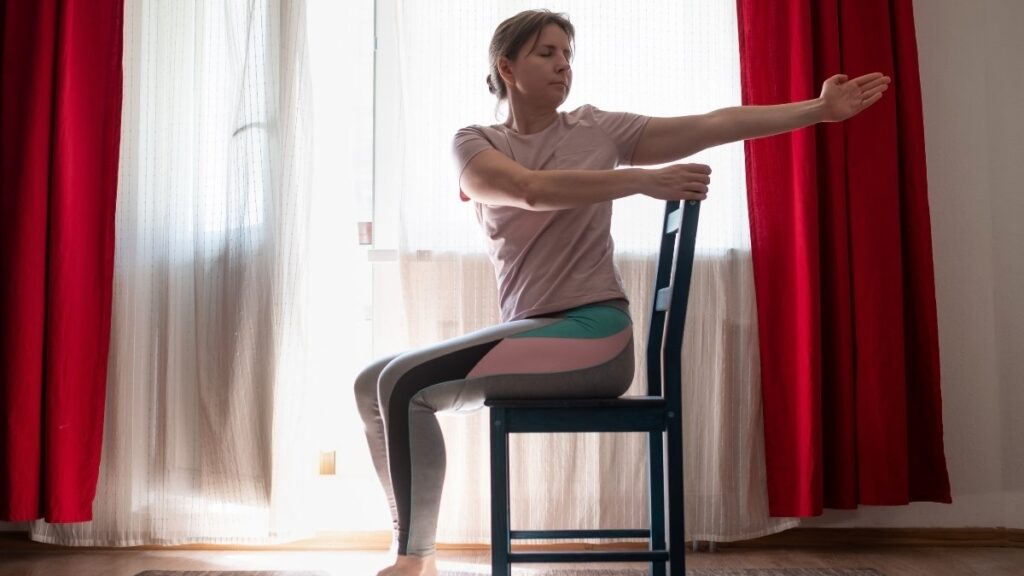
Your spine needs to twist. You twist to look behind you in the car. You twist to grab something off a shelf. This exercise keeps that ability.
Exercise 4: Side Taps
Tap one foot out to the side. Bring it back to center. Tap the other foot out. Keep alternating.
This is simple, but it matters. You’re practicing shifting your weight from side to side. That’s what you do when you walk. When you step over things. When you avoid tripping.
Pro Tip: Make the taps bigger as you warm up. Start small. Get bigger. Your hips will thank you.
Exercise 5: Ankle Mobility Exercises
Put your heel on the floor. Lift your knee up. Tap your toe on the same spot. Go back to heel down. Switch legs.
Your ankles do more than you think. Weak ankles lead to falls. Strong ankles keep you stable on uneven ground.
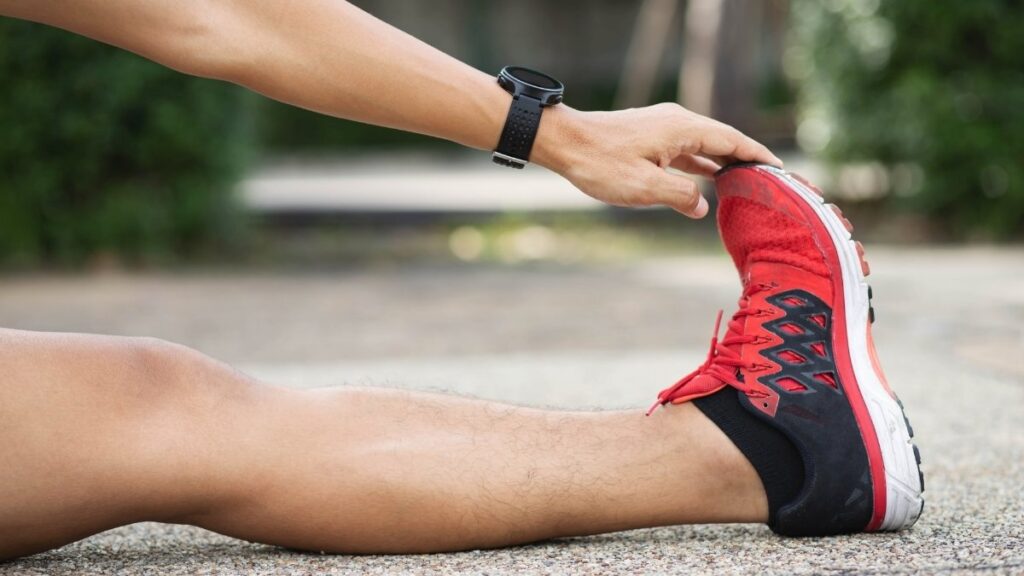
Balance problems often start in your feet. You lose sensation down there as you age. Moving your ankles helps wake up those nerves.
Important: If your ankles are stiff, this will feel awkward at first. That’s normal. Keep doing it. They’ll loosen up.
Now you’re warm. Your blood is flowing. Your joints are loose. Time for the real work.
Main Strength and Balance Exercises
These 10 exercises hit everything you need. Strong legs. Better balance. Core strength. All in 50-second bursts.
Exercise 6: Heel Flicks
Stand behind your chair. Lift one heel toward your butt. Lower it slowly. Switch legs. Keep going for 50 seconds.
This stretches the front of your thighs. It also works the back of your knee. That area gets stiff when you sit too much.
Form Check: Don’t swing your leg. Control it. Slow down if you’re using momentum instead of muscle.
Exercise 7: Side Stepping
Take one or two steps to your left. Come back to the chair. Step to your right. Back to the chair.
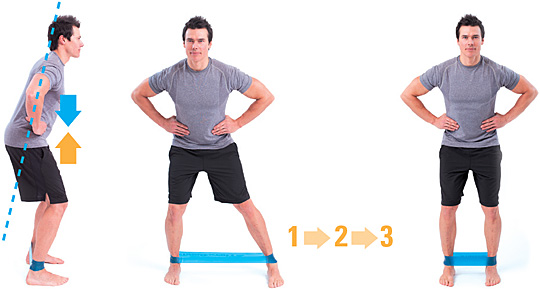
Life isn’t just forward and backward. You move sideways in the grocery store. In crowded rooms. At family gatherings. This trains that movement.
Real-World Benefit: Next time you’re in a tight space, you’ll move with confidence instead of fear. That confidence prevents falls.
Exercise 8: Calf Raises
Put your feet flat, hip-width apart. Hold the chair lightly. Raise up onto your toes. Push through your big toe and second toe. Lower down with control.
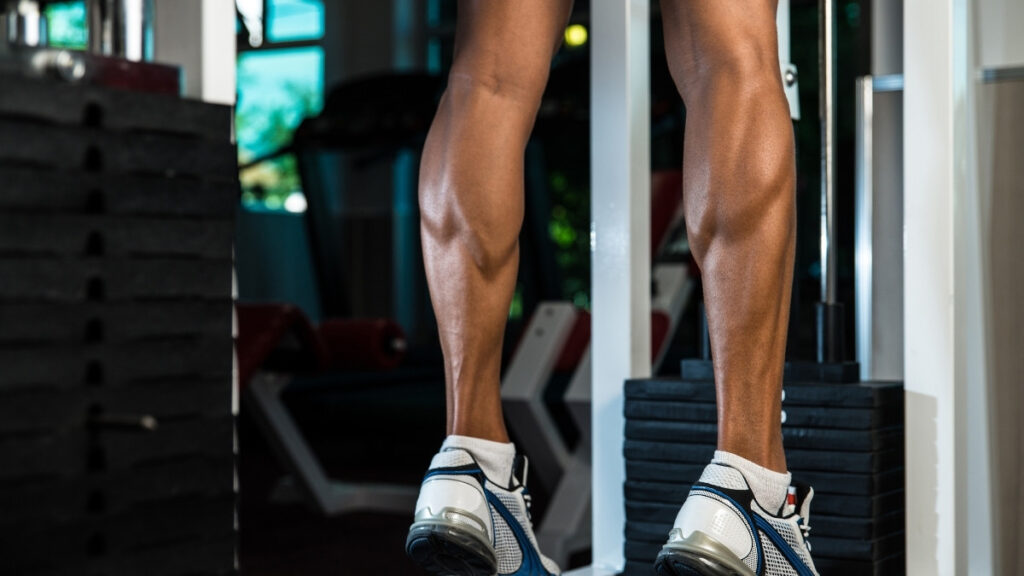
Strong calves pump blood back to your heart. They also keep you stable on your feet. Every step you take uses these muscles.
Breathing Tip: Breathe out as you go up. Breathe in as you lower down. Never hold your breath during exercise.
Exercise 9: Toe Raises
This is the opposite of calf raises. Lift your toes up while your heels stay down. Stand tall. Don’t stick your butt out.
The muscles around your ankles need work from every angle. This one is harder than it looks. That’s okay.
Watch For: If you’re wobbling a lot, hold the chair tighter. As you get stronger, use a lighter grip.
Exercise 10: Squats
Feet shoulder-width apart. Bend your knees. Push your butt back and down. Keep your feet flat. Keep your spine neutral.
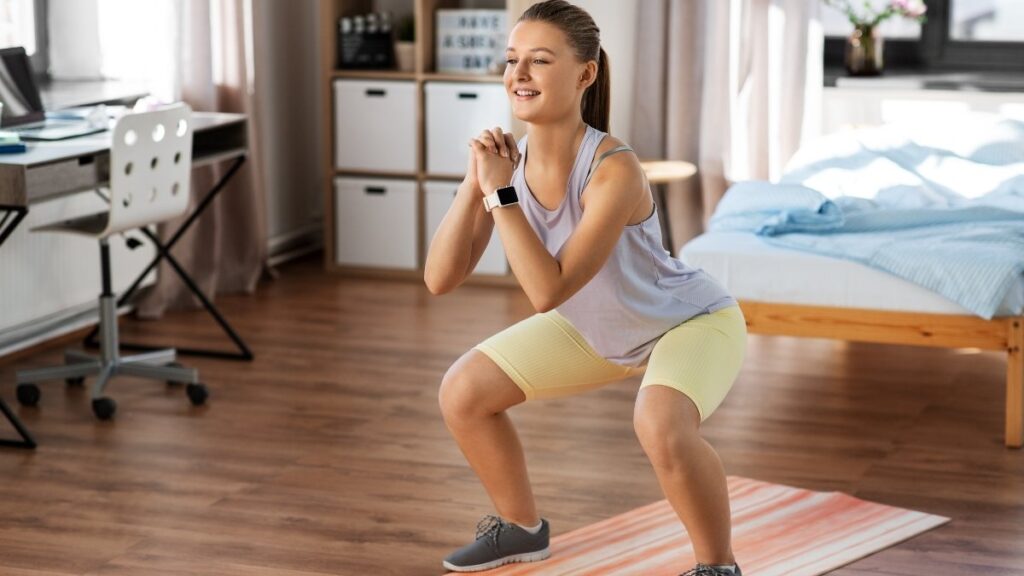
Squats are king. They work your thighs. Your glutes. Your hamstrings. Your core. Everything fires at once.
Here’s why this matters: when you can’t stand up from a chair easily, your fall risk goes up. Squats keep that movement strong.
Depth Guide: Go as low as you can with good form. Some days that’s barely bending. Other days you’ll go lower. Both are fine.
Exercise 11 & 12: Forward Lunges (Right & Left)
Step forward with one foot. Plant it flat. Bend your back knee. Your front knee bends too. Push off your front foot to come back. Do 50 seconds on each leg.
Lunges build muscle memory for catching yourself. When you trip, your body needs to know how to step forward quickly. This trains that reaction.
Your knee gets stronger. Your thighs get stronger. The whole chain from hip to ankle wakes up.
Safety Note: If forward lunges hurt your knees, skip ahead to reverse lunges. They’re easier on the joints.
Exercise 13: Toe Walking
Turn 90 degrees. Rise up on your toes. Take four small steps. Put your feet flat. Turn and go the other way.
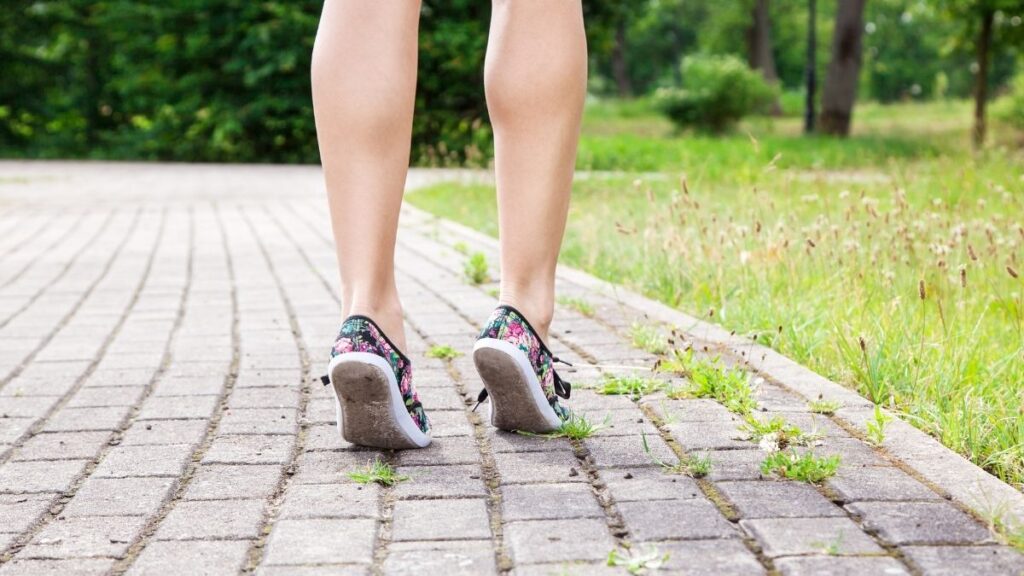
This challenges your balance while you’re moving. Standing balance is one thing. Moving balance is harder. And more useful.
Mental Focus: Pick a spot on the wall. Stare at it. Your balance improves when your eyes have a target.
Exercise 14: Reverse Lunges (Alternating)
Step back into a lunge. Return to start. Switch legs. Keep alternating.
These are gentler on your knees than forward lunges. You still build strength. You still work balance. Less joint stress.
Exercise 15: Functional Reach with Squat
Do a squat. Stand up tall. Reach up high with one hand. Squat again. Reach with the other hand.
This mimics real life. You squat to pick up groceries. You reach to put things away. Training the movement pattern makes daily tasks easier.
Modification: If reaching overhead bothers your shoulders, reach forward instead. You still get the benefit.
After you finish all 10 exercises, rest for 60 seconds. Then do them all again. Two rounds total.
Your legs might shake. That’s muscle fatigue, not weakness. It means you’re working hard enough.
Real Success Stories: Seniors Thriving at 90+
Let me tell you about Joseph Caminiti. He’s 100 years old. He goes to the gym five days a week. Cardio and weights. An hour each morning.
He’s never had cancer. Never had heart disease. Few health problems at all. His secret? “You’ve got to exercise. You’ve got to keep going. You’ve got to keep moving.”
The Takeaway: Joseph didn’t get special genetics. He just never stopped moving. That’s available to you too.
Edna Giordano started exercising at 65. She had to retire from her hospital job because of her age. That made her angry. So she joined a gym.
Now she’s 92. She’s a mom of five. Grandmother to 21. Great-grandmother to four. And she feels 50.
“I don’t even think about being in my 90s,” she says. “I feel the same as I felt when I was fifty.”
Edna’s Weekly Routine:
- Four one-hour gym sessions (she alternates upper and lower body)
- Daily walking
- Daily gardening
- Dynamic mobility work before lifting
- Stretching after every workout
She eats lots of fish for protein. Takes a multivitamin and iron. Allows herself treats sometimes. Balance in everything.
What This Means for You: Edna started at 65. If you’re reading this in your 60s, 70s, or 80s, you’re not too late. Not even close.
Richard Morgan is 93. He’s a four-time world champion in indoor rowing. His aerobic capacity matches a healthy 30 or 40-year-old. His body fat percentage is incredibly low.
His body proves something important: your body can still adapt at any age. Your muscles can still grow. Your heart can still get stronger.
The Common Thread: None of these people are superhuman. They just stayed consistent. They moved their bodies regularly. They didn’t let age be an excuse.
You might be thinking, “But I’m not like them.” Yes, you are. You have the same kind of body. It just needs the same kind of work.
Safety Guidelines and Modifications
Talk to your doctor before starting any new exercise program. This isn’t legal talk. This is practical advice.
Your doctor knows your health history. They know your medications. They can tell you if anything needs modification. Especially if your balance is already weak.
Pre-Exercise Checklist:
- Clear the area around you
- Have water nearby
- Keep your phone close in case you need help
- Wear shoes with good grip
- Use a sturdy chair, never one with wheels
Start small. Really small. Smaller movements. Fewer repetitions. Less range of motion. Build up gradually over weeks, not days.
Never hold your breath. Breathe slowly and steadily. Holding your breath spikes your blood pressure. That’s dangerous.
Breathing Pattern: Breathe out during the hard part of the exercise. Breathe in during the easy part. Keep it rhythmic.
Hold the chair for support whenever you need it. There’s no prize for letting go too soon. Use support until you’re ready.
When to Modify:
If your knees hurt during lunges, don’t go as deep. Or switch to reverse lunges only. Pain is your body talking. Listen to it.
If toe raises feel impossible, that’s okay. Work on calf raises instead. Come back to toe raises in a few weeks.
If 50 seconds feels too long, do 30 seconds. Or 20. The exact time matters less than doing the exercise correctly.
Try This: Start with one round instead of two. Master one round first. Add the second round after two weeks.
Red Flags to Stop Immediately:
Chest pain or pressure. Don’t push through it. Stop and call for help.
Severe shortness of breath. Being winded is normal. Gasping for air is not.
Dizziness or lightheadedness. Sit down right away. Wait for it to pass.
Joint pain that gets worse with movement. Some muscle soreness is fine. Sharp joint pain is not.
If you experience any of these, talk to your doctor before exercising again. Better safe than sorry.
Some days you’ll feel great. Other days you’ll feel weak. That’s normal. Your body isn’t a machine. It varies day to day.
On weak days, do less. On strong days, challenge yourself more. There’s no shame in adjusting based on how you feel.
Creating Your Weekly Exercise Schedule
Consistency beats intensity. Doing 15 minutes three times a week beats doing nothing all week then overdoing it on Saturday.
Balance exercises work best when done 3 to 5 times weekly. Even 10 to 15 minutes daily makes a real difference.
Aim for three sessions of this 20-minute routine. Add two days of other light activity. That gives you five active days with two rest days.
Sample Week That Works:
Monday: 20-minute standing routine Tuesday: 20 to 30-minute walk (outside or on a treadmill) Wednesday: 20-minute standing routine Thursday: Rest day or gentle stretching only Friday: 20-minute standing routine Saturday: Light activity like gardening or walking Sunday: Full rest day
Rest Days Matter: Your muscles don’t grow during exercise. They grow during rest. Don’t skip rest days trying to speed up progress.
Progressive Overload (How to Get Stronger Over Time):
Weeks 1-2: Do the routine once through, not twice. Focus on learning the movements.
Weeks 3-4: Add the second round. Now you’re doing the full workout.
Weeks 5-6: Hold positions slightly longer. Or add very light ankle weights (1-2 pounds max).
Week 7+: Increase range of motion. Squat lower. Step further in lunges. Use the chair less.
Tracking Tip: Mark your calendar with an X for each day you exercise. Seeing a chain of X’s motivates you to keep going. Breaking the chain feels bad. That’s good motivation.
Listen to your body between sessions. Some soreness is normal. It means you worked your muscles. But you should recover between workouts.
If you’re still sore two days later, you pushed too hard. Scale back next time.
Time of Day Matters: Pick a time you’ll actually stick to. Morning people should exercise in the morning. Night owls can exercise later. The best time is the time you’ll consistently do it.
Stay Strong and Independent
The research is clear. Regular exercise cuts fall risk dramatically. It improves your quality of life. It keeps you independent longer.
This 20-minute standing routine gives you everything you need. It targets the exact muscles and balance skills that matter. It requires no equipment. It fits into any schedule.
Edna Giordano proves the point. She started at 65. She’s 92 now. No fancy tricks. Just consistency. Just showing up regularly. Just doing the basics over and over.
Your body is capable of more than you think. Age isn’t the enemy. Inactivity is the enemy. Movement is the solution.
Start Small Today:
Today: Just do the warm-up exercises. That’s it. Five minutes.
Tomorrow: Do the warm-up plus three of the main exercises. That’s maybe 10 minutes.
Next week: Do the full routine once through. Not twice. Just once.
In a month: You’ll be doing the full routine twice. You’ll feel stronger. You’ll move with more confidence.
The Truth About Consistency:
You won’t see changes overnight. Your legs won’t suddenly feel stronger after one workout. But in three weeks? You’ll notice. In six weeks? Other people will notice.
Every session builds on the last one. Miss a week and you slide backward. Stay consistent and you move forward.
One More Thing:
The best exercise routine is the one you’ll actually do. Not the hardest one. Not the most advanced one. The one you’ll do.
This routine is simple. It’s short. It’s effective. It’s designed for real people with real lives.
You don’t need to become an athlete. You just need to stay strong enough to live the life you want. Strong enough to play with grandkids. Strong enough to travel. Strong enough to stay in your own home.
That’s what this routine gives you. Strength. Balance. Confidence. Independence.
Start today. Your future self will thank you.


